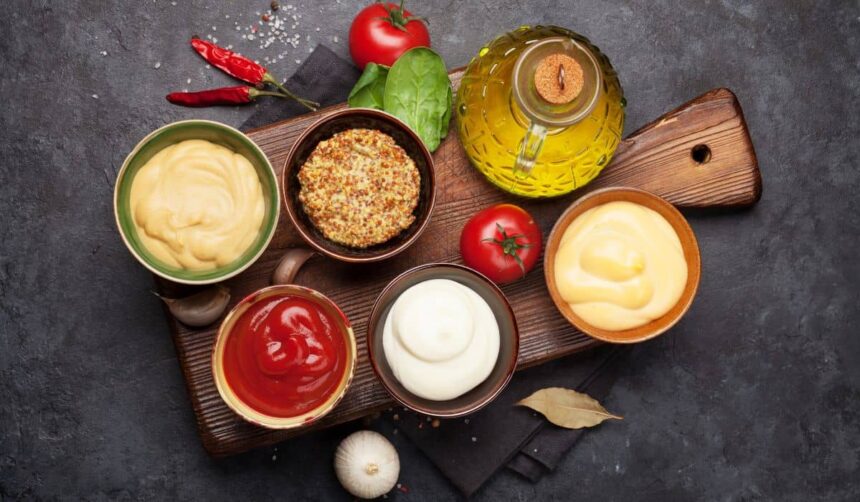If 2024 was the year of onion boils, cucumber salads, protein fixations, and a return to value propositions from fast-food restaurants as well as casual dining experiences, as The Washington Post outlined, then 2025 promises to be even more exciting — at least, according to a variety of experts.
From specific recipes being added to menus to top-down food trends about to intrigue and satisfy the taste buds of Americans nationwide, the new year brings with it a litany of novel themes when it comes to the joy of eating.
Food Trend No. 1: It’s All About Setting the Mood
As younger Americans diverge from previous generations in more ways than one when it comes to their food and beverage preferences (for example, Newsweek recently described this age cohort as “abandoning alcohol” in favor of boozeless alternatives), the repercussions may go beyond the most obvious.
According to Forbes, somewhat exotic ingredients such as lemongrass and bergamot can actually induce a calming influence, while Calabrian chili and smoked salt chocolates are exciting. Botanicals and herbs, particularly those formulations that skip the sugar or alcohol, could see a moment in the sun in 2025. This preference for something a little out of the ordinary or mundane will translate into a trend, one which may last given Gen Z’s rising prominence as a consumer demographic.
Per the Institute of Food Technologists, Sydney Byrne, marketing manager for Sensient Flavors & Extracts, said that “younger consumers seek stimulation from their foods and beverages and are looking for exciting and adventurous taste experiences that tell a story.”
Sauces To Continue (and Evolve) as a Massive Food Trend in 2025
Sauces are already a big deal — look no further than KFC’s prototype kitchen focused exclusively on adding sauces to staple menu items — and it looks like condiments are about to claim center stage next year as well.
According to The New York Times, sauces aren’t just trending — they’re set to become a “national obsession.” Citing specifics such as Chipotle’s vinaigrette and Raising Cane’s peppery mayo-ketchup blend, the NYT also gestured toward elevated versions of staple condiments ranging from hoisin to tzatziki and from harissa to toum.
Ranch, meanwhile, is expected to keep its position as a go-to. While basic ranch is a favorite for many Americans, expect 2025 to bring a plethora of different varieties as a twist on the trend, with the famous white sauce being combined with things like pickle or chimichurri.
Ingredients Both New and Old To Take Up Space on Restaurant Plates Next Year
Taking a different tack, Food & Wine spoke to three different culinary experts who zeroed in on ingredients — both traditional to American palates as well as some newcomers — that are about to become serious trends in the coming days.
Jake Potashnick, executive chef/owner of Feld in Chicago, is convinced that the turnip has a bright future in the cards. “Turnips are about to have a moment. A humble root vegetable that is going to get shown some more widespread love,” he said.
Meanwhile, Katarina Petonito — executive chef of The Duck & the Peach, La Collina, and The Wells in Washington, D.C. — pointed to sudachi as a star culinary candidate in 2025.
“The Japanese citrus sudachi is going to be a star ingredient this coming year. It tastes almost like yuzu but with a peppercorn undertone is incredibly delightful. It only recently became available in our area, so you no longer have to source it from a ‘guy who knows a guy,’” Petonito suggested.
Finally, Masa Hamaya, culinary director of O-Ku restaurants, spoke of the versatility of black sesame paste: “Similar to tahini, black sesame paste (kuro nerigoma) is an ingredient I expect to see trending in 2025. Not only is it used in Japanese cuisine, but it complements so many of our favorite things to snack on at home, from berries to pancakes to cookies.”
Gas Station and Convenience Store Haute Cuisine?
It’s not just the grocery stores and sit-down restaurants that are upping their game, as The New York Times reported.
7-Eleven is planning to roll out Japanese-inspired products to select stores in the United States, and many gas stations and convenience stores are following suit in providing extensive made-to-order meals to patrons.
Wawa is bringing its famous sandwiches to stores beyond its normal regional reach, expanding into the South, and Texas’ Buc-ee’s plans to deliver some mouthwatering brisket to more states than ever before.
Customization and quality improvements seem to be key to elevating a formerly staid gas station or convenience store food selection, making this a major move in a different direction.


























